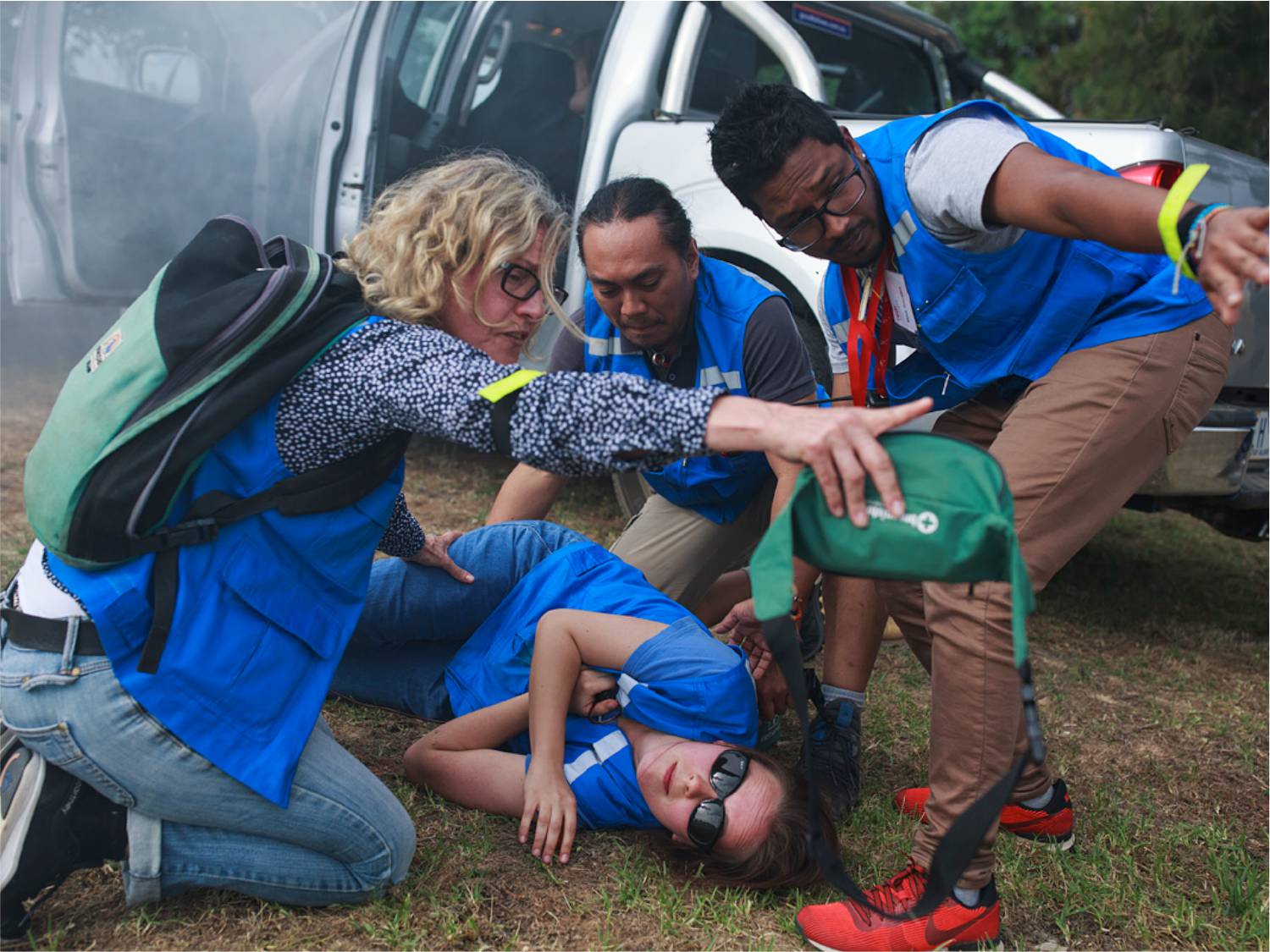
HEAT TRAINING
Humanitarian workers in emergency response not only face ongoing dangers due to natural hazards, but also can be vulnerable to lawlessness, political instability and armed conflict in areas with access and infrastructure difficulties. Issues such as harassment, interactions with aggressive armed combatants, day light robbery and traffic accidents are all realistic risks, requiring humanitarian responders to be prepared on how to deal with such challenges should they arise. To increase preparedness for the occurrence of potential conflict situations in the future, members of the AHA Centre team departed to Australia to undertake RedR Australia’s 5-day Hostile Environment Awareness Training (HEAT) course from the 4th to the 7th of February, 2019, in Dookie, Victoria.
The HEAT course includes integrated Tactical Emergency Casualty Care (TECC) training which combines theory and practical-based emergency medical training. Such TECC skills include commercial and improvised tourniquets and haemorrhage control, airway management of an unconscious casualty and an array of improvised techniques teaching participants how to save and preserve life with limited resources. This was highlighted as a key element of the course relevant to the AHA Centre, with participants also valuing other elements such as ‘movement under fire’, that would be of benefit should responders find themselves in such situations.
Engaging in risk preparedness trainings such as HEAT supports the capacity of AHA Centre staff to be ready for any situation, regardless of the context and expectations. Participants noted the real-life’ feel of numerous simulations, explaining that they reflect potential occurrences that may take place during response. The use of practical training with dummies during TECC, and direct engagement scenarios such as kidnapping, ensure the team now hold hands-on practical knowledge of how to react in such undesirable situations. Overall, while such occurrences may be few and far between for the AHA Centre staff, there is now sufficient awareness and skills to counter such risks should they arise during emergency response assignments in all locations.
Written by: Wiliam Shea | Photo : RedR Australia


